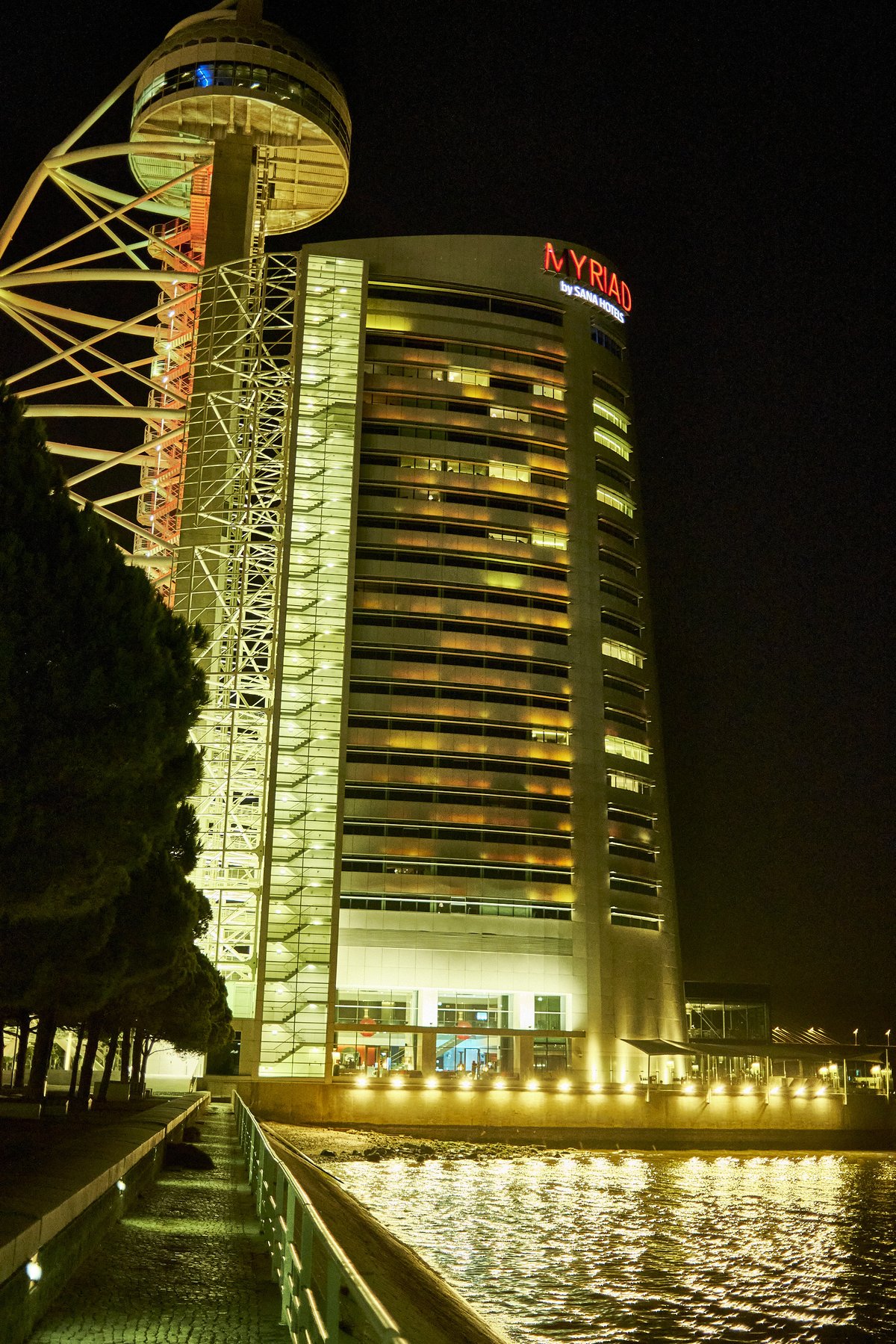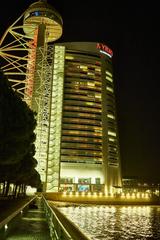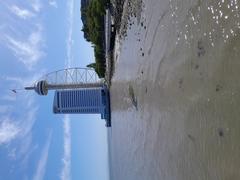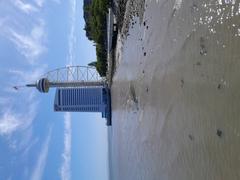
Visiting Hours, Tickets, and History of Cais das Naus in Lisbon
Date: 18/07/2024
Introduction
Cais das Naus, or the Wharf of the Ships, is one of Lisbon’s most historical and culturally significant landmarks. Nestled along the banks of the Tagus River, this iconic site offers a fascinating glimpse into Portugal’s illustrious maritime history. Originally established in the 14th century as a royal shipyard under King Ferdinand I, Cais das Naus rose to prominence during the Age of Discovery, becoming a bustling hub for shipbuilding and international trade (Museu de Marinha). From here, legendary explorers like Vasco da Gama set sail, transforming global trade routes and solidifying Lisbon’s status as a leading European power (Lisbon Story Centre). Today, Cais das Naus is a vibrant waterfront promenade that combines historical charm with modern amenities. This guide provides comprehensive information on visiting hours, ticket prices, guided tours, and tips for making the most of your visit to this remarkable site.
Table of Contents
- [Historical Context and Significance](#historical-context-and-significancehistorical-context-and-significance)
- [A Royal Shipyard and the Gateway to the World](#a-royal-shipyard-and-the-gateway-to-the-worlda-royal-shipyard-and-the-gateway-to-the-world)
- [A Center of Commerce and Cultural Exchange](#a-center-of-commerce-and-cultural-exchangea-center-of-commerce-and-cultural-exchange)
- [Decline, Transformation, and Rebirth](#decline-transformation-and-rebirthdecline-transformation-and-rebirth)
- [Visitor Information](#visitor-informationvisitor-information)
- [Visiting Hours and Tickets](#visiting-hours-and-ticketsvisiting-hours-and-tickets)
- [Guided Tours and Accessibility](#guided-tours-and-accessibilityguided-tours-and-accessibility)
- [Nearby Attractions and Travel Tips](#nearby-attractions-and-travel-tipsnearby-attractions-and-travel-tips)
- [FAQ Section](#faq-sectionfaq-section)
- [A Legacy Preserved](#a-legacy-preserveda-legacy-preserved)
- [Conclusion and Call to Action](#conclusion-and-call-to-actionconclusion-and-call-to-action)
Historical Context and Significance
Cais das Naus, meaning “Wharf of the Ships,” holds a prominent place in Lisbon’s historical narrative. Its story intertwines with Portugal’s maritime dominance during the Age of Discovery, leaving behind a legacy etched in stone and imbued in the city’s cultural fabric.
A Royal Shipyard and the Gateway to the World
The history of Cais das Naus dates back to the 14th century. Initially a simple shoreline used for shipbuilding and repairs, its significance grew exponentially under the patronage of King Ferdinand I. In 1375, recognizing the strategic importance of the location, he ordered the construction of a royal shipyard, the Ribeira das Naus. This marked the beginning of Cais das Naus’ transformation into a bustling maritime hub.
The shipyard, strategically positioned on the Tagus River, became the heart of Portugal’s naval ambitions. It was from here that Vasco da Gama embarked on his groundbreaking voyage to India in 1497, forever altering global trade routes. Cais das Naus witnessed the construction and launch of countless caravels and galleons, vessels that carried Portuguese explorers, traders, and adventurers to the far corners of the globe. This era of exploration brought immense wealth and influence to Portugal, solidifying Lisbon’s position as a leading European power.
A Center of Commerce and Cultural Exchange
Beyond its shipbuilding prowess, Cais das Naus evolved into a vibrant center of commerce. The wharf bustled with activity as ships laden with spices, silks, and exotic goods from Africa, Asia, and the Americas docked at its shores. This influx of international trade brought not only prosperity but also a rich cultural exchange, shaping Lisbon’s identity as a cosmopolitan city.
The area surrounding Cais das Naus flourished alongside the maritime activity. Warehouses, workshops, and merchants’ houses sprung up, creating a dynamic and diverse neighborhood. The constant flow of sailors, traders, and travelers contributed to a vibrant street life, filled with the sights, sounds, and smells of distant lands.
Decline, Transformation, and Rebirth
The 1755 Lisbon earthquake, a catastrophic event that reshaped the city, dealt a significant blow to Cais das Naus. The shipyard suffered extensive damage, and the subsequent tsunami wreaked havoc on the waterfront. While reconstruction efforts were undertaken, the shipyard never fully regained its former glory.
Over the following centuries, Cais das Naus underwent a gradual transformation. The shipyard eventually gave way to other uses, and the area transitioned into a more residential and commercial district. However, its historical significance was not forgotten.
In the late 20th century, Lisbon embarked on a major urban renewal project, breathing new life into Cais das Naus. The waterfront was revitalized with a focus on preserving its historical character while creating a vibrant public space. Today, Cais das Naus stands as a testament to Lisbon’s rich maritime heritage, offering visitors a glimpse into its illustrious past.
Visitor Information
Visiting Hours and Tickets
Guided Tours and Accessibility
Guided tours are available for those who wish to delve deeper into the history and significance of Cais das Naus. These tours often include visits to nearby attractions and can be booked in advance through various tour operators or the official site.
The area is accessible to visitors with disabilities, with ramps and pathways designed to accommodate wheelchairs and strollers. Information is also available in multiple languages to cater to international tourists.
Nearby Attractions and Travel Tips
While visiting Cais das Naus, consider exploring nearby attractions such as the Belém Tower, the Jerónimos Monastery, and the Padrão dos Descobrimentos. These sites offer further insights into Portugal’s maritime history and are all within a short distance of Cais das Naus.
Public transportation, including trams and buses, provides easy access to Cais das Naus. If you’re driving, parking is available but can be limited during peak times, so arriving early is recommended.
FAQ Section
Q - What are the visiting hours for Cais das Naus? A - Cais das Naus is generally open from 9 AM to 8 PM, but it’s best to check for any seasonal changes or special events.
Q - Is there an admission fee for Cais das Naus? A - Admission to the wharf is free, though some exhibits or guided tours may have a fee.
Q - Are guided tours available? A - Yes, guided tours are available and can be booked in advance through various tour operators or the official site.
Q - Is Cais das Naus accessible to visitors with disabilities? A - Yes, the area is designed to be accessible with ramps and pathways for wheelchairs and strollers.
A Legacy Preserved
Walking along the wide promenade of Cais das Naus today, one can still sense the echoes of its vibrant past. The area is adorned with historical markers and monuments that commemorate its maritime legacy. The Museu da Marinha (Maritime Museum), housed in the western wing of the Jerónimos Monastery, offers a fascinating journey through Portugal’s seafaring history, showcasing intricate model ships, navigational instruments, and artifacts from its Age of Discovery.
Cais das Naus is not merely a historical relic; it’s a living, breathing testament to Lisbon’s enduring connection to the sea. The revitalized waterfront is a popular gathering place for locals and tourists alike, offering stunning views of the Tagus River and the iconic 25 de Abril Bridge. Restaurants and cafes line the promenade, providing the perfect setting to soak in the atmosphere and imagine the countless ships that once graced these historic waters.
Conclusion and Call to Action
Cais das Naus offers a unique window into Lisbon’s maritime heritage, blending historical significance with modern-day vibrancy. Whether you’re a history enthusiast, a casual visitor, or a local, a visit to this iconic site is a must. Don’t forget to check out other related posts on our site and follow us on social media for more updates and travel tips!
References
- Museu de Marinha https://museumarinha.pt/en/
- Lisbon Story Centre https://www.lisboastorycentre.pt/en/
- Padrão dos Descobrimentos https://padraodosdescobrimentos.pt/en/
- Museu do Dinheiro https://www.museudodinheiro.pt/






























































